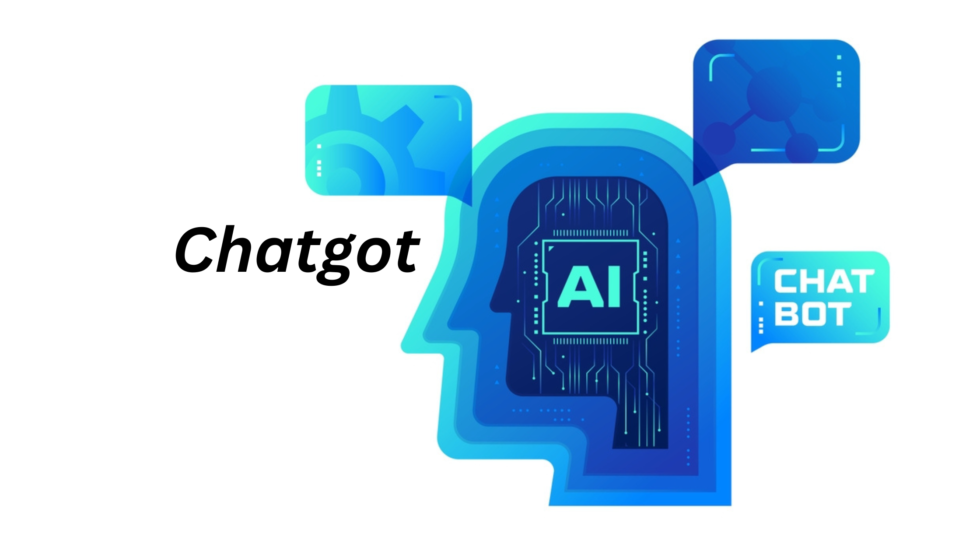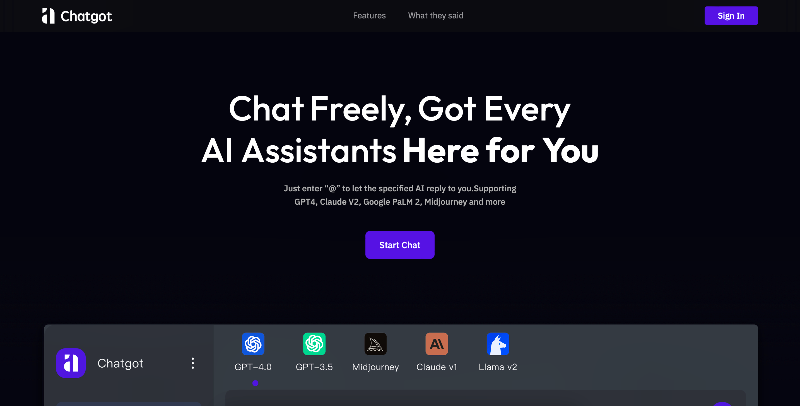
The advent of artificial intelligence (AI) has brought about transformative changes across various sectors, with conversational AI being one of the most significant advancements. Among the plethora of AI-driven conversational agents, “Chatgot” stands out as a noteworthy development. This article delves into the evolution, capabilities, and impact of Chatgot, exploring how it has revolutionized human-computer interaction and what the future holds for this innovative technology.
The Genesis of Chatgot
The story of Chatgot begins with the broader history of AI and natural language processing (NLP). Early attempts at creating conversational agents can be traced back to the 1960s with ELIZA, a program developed by Joseph Weizenbaum that mimicked a Rogerian psychotherapist. ELIZA laid the groundwork for future developments in NLP, although its capabilities were rudimentary by today’s standards.
- Early Milestones: After ELIZA, several other projects emerged, including PARRY, which simulated a person with paranoid schizophrenia, and Racter, which generated creative writing. These early programs demonstrated the potential of conversational AI but also highlighted the challenges, such as understanding context and generating coherent responses.
- Technological Advancements: The 21st century brought significant advancements in machine learning, data processing, and computational power. These technological leaps enabled the development of more sophisticated conversational agents. The introduction of deep learning and neural networks, particularly recurrent neural networks (RNNs) and later transformers, revolutionized the field.
- The Birth of Chatgot: Chatgot emerged from this fertile ground of innovation. Developed by a leading AI research organization, it leveraged the latest advancements in transformer architecture, large-scale datasets, and reinforcement learning to create a conversational agent with unprecedented capabilities. Its name, Chatgot, signifies its ability to engage in meaningful and intelligent conversations, encapsulating the essence of what conversational AI aims to achieve.
Capabilities of Chatgot
Chatgot’s capabilities are a testament to the progress made in AI and NLP. Its design and functionality encompass several key aspects that make it a powerful conversational agent.
- Natural Language Understanding: At the core of Chatgot’s functionality is its ability to understand natural language. This involves parsing and comprehending text inputs from users, extracting meaningful information, and identifying the intent behind queries. Chatgot’s sophisticated NLP algorithms enable it to handle a wide range of linguistic nuances, including idiomatic expressions, slang, and context-dependent meanings.
- Contextual Awareness: One of the standout features of Chatgot is its contextual awareness. Unlike earlier conversational agents that struggled with maintaining context across multiple interactions, Chatgot can track and recall context, allowing for more coherent and relevant responses. This is particularly useful in complex conversations where the context may span several exchanges.
- Dialogue Management: Effective dialogue management is crucial for a seamless conversational experience. Chatgot excels in managing dialogues, ensuring that conversations flow naturally and addressing user queries in a logical and structured manner. It can handle interruptions, digressions, and follow-up questions with ease, making interactions more human-like.
- Personalization and Adaptability: Chatgot’s ability to personalize interactions sets it apart from many other conversational agents. By learning from previous interactions and incorporating user preferences, Chatgot can tailor its responses to suit individual users. This adaptability enhances user satisfaction and engagement.
- Multimodal Capabilities: In addition to text-based interactions, it can integrate multimodal inputs, including voice and visual data. This allows for a more versatile interaction model, accommodating users who prefer speaking over typing or those who benefit from visual aids.
Applications of Chatgot

The versatility of Chatgot has led to its adoption across various domains, each leveraging its unique capabilities to enhance user experiences and streamline operations.
- Customer Support: One of the most prominent applications of Chatgot is in customer support. Companies across industries have integrated it into their customer service frameworks to provide instant, accurate, and round-the-clock assistance. It can handle common queries, process transactions, and escalate complex issues to human agents, improving efficiency and customer satisfaction.
- Healthcare: In the healthcare sector, it is used for patient engagement, triage, and health monitoring. It can provide information on medical conditions, remind patients of medication schedules, and even offer preliminary diagnoses based on symptoms. This application helps reduce the burden on healthcare professionals and ensures timely support for patients.
- Education: Educational institutions and e-learning platforms utilize Chatgot to support students and enhance learning experiences. It can answer questions, provide explanations, and guide students through course materials. Its ability to offer personalized feedback and adaptive learning paths makes it a valuable tool for both educators and learners.
- E-commerce: In e-commerce, it serves as a virtual shopping assistant, helping customers find products, answer questions, and complete purchases. Its personalized recommendations and 24/7 availability enhance the shopping experience, driving customer loyalty and sales.
- Entertainment: The entertainment industry leverages it for interactive storytelling, gaming, and content creation. It can engage users in immersive narratives, provide game hints, and even generate creative content such as poetry and short stories.
The Impact of Chatgot
The impact of Chatgot extends beyond its immediate applications, influencing broader trends in technology, society, and business.
- Enhanced Human-Computer Interaction: Chatgot represents a significant leap in human-computer interaction. Its ability to understand and respond to natural language inputs makes technology more accessible and intuitive, reducing the learning curve for users and fostering greater adoption of digital tools.
- Efficiency and Productivity: By automating routine tasks and providing instant support, It improves efficiency and productivity across various sectors. Businesses can streamline operations, reduce costs, and allocate human resources to more complex and value-added activities.
- Accessibility and Inclusion: Chatgot’s multimodal capabilities and adaptability make technology more accessible to diverse user groups, including those with disabilities. Voice interaction, for instance, can assist visually impaired users, while personalized responses cater to different linguistic and cultural backgrounds.
- Data-Driven Insights: The interactions between users and It generate valuable data that can be analyzed for insights into customer behavior, preferences, and pain points. This data-driven approach enables businesses to refine their strategies, enhance products and services, and deliver better customer experiences.
Ethical Considerations and Challenges
Despite its numerous benefits, the deployment of Chatgot raises important ethical considerations and challenges that need to be addressed.
- Privacy and Data Security: The collection and processing of user data by this necessitate robust privacy and data security measures. Ensuring that user information is protected and used ethically is paramount to maintaining trust and compliance with regulations.
- Bias and Fairness: AI systems, including It, can inadvertently perpetuate biases present in their training data. Ensuring fairness and minimizing bias in responses is a critical challenge that requires continuous monitoring and refinement of algorithms.
- Transparency and Accountability: Users should be informed when they are interacting with an AI agent rather than a human. Transparency about It’s capabilities and limitations, as well as accountability for its actions, is essential for ethical deployment.
- Job Displacement: The automation of tasks by It can lead to job displacement in certain sectors. While it also creates new opportunities, managing the transition and supporting affected workers through reskilling and upskilling initiatives is crucial.
The Future of Chatgot
Looking ahead, the future of Chatgot and conversational AI holds exciting possibilities and potential advancements.
- Continued Technological Innovation: Ongoing research and development in AI and NLP will likely result in even more sophisticated versions of it. Improvements in understanding, contextual awareness, and emotional intelligence will enhance its capabilities further.
- Integration with Emerging Technologies: The integration of it with other emerging technologies, such as augmented reality (AR), virtual reality (VR), and the Internet of Things (IoT), will expand its application scope. Imagine interacting with Chatgot in a fully immersive VR environment or through smart home devices.
- Global Expansion: As language models continue to improve, it will become more proficient in understanding and conversing in multiple languages and dialects. This will facilitate its global expansion and enable it to serve diverse populations more effectively.
- Human-AI Collaboration: The future will likely see a greater emphasis on human-AI collaboration, where Chatgot complements human skills rather than replacing them. This synergy can lead to innovative solutions and enhanced outcomes in various fields.
Conclusion
Chatgot represents a remarkable achievement in the field of conversational AI, embodying the progress made in natural language understanding, contextual awareness, and dialogue management. Its impact across customer support, healthcare, education, e-commerce, and entertainment demonstrates its versatility and value. However, as we embrace the benefits of it, it is imperative to address the ethical considerations and challenges associated with its deployment.
The future of Chatgot promises continued innovation, integration with emerging technologies, and global reach. As we navigate this evolving landscape, the focus should remain on leveraging it to enhance human experiences, drive efficiency, and foster inclusive and ethical AI practices. In doing so, Chatgot will not only revolutionize human-computer interaction but also contribute to a more connected and intelligent world.


